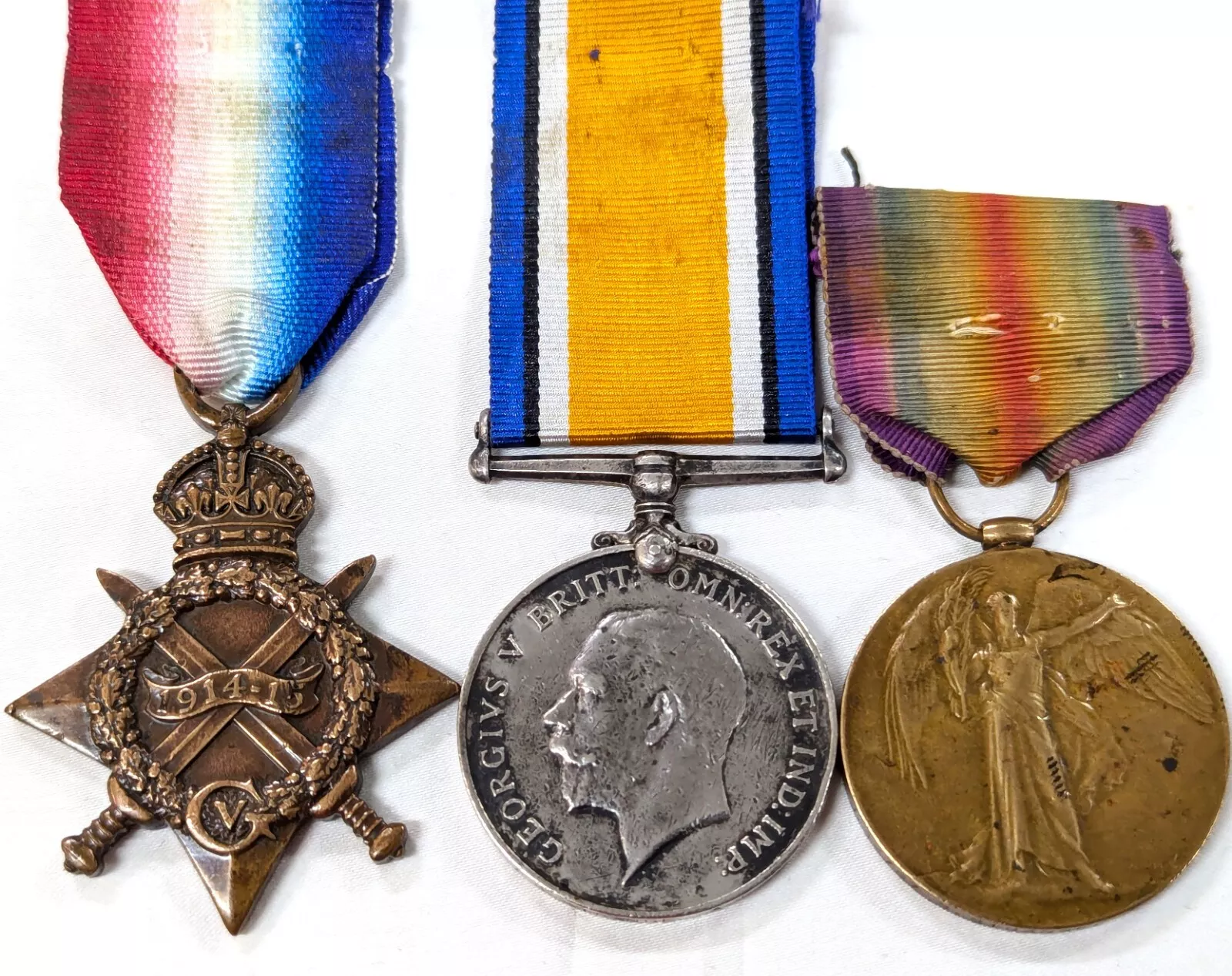For sale is a set of medals comprising of 1914 – 15 Star, British War and Victory Medals (1914 – 18) all impressed named J.12767. S. STRANGE. A.B. R.N. They come with copies of service records.
Able Seaman Simon Strange was born on 13/12/1893 in Swindon, Wiltshire, England. A butcher by trade he enlisted into the Royal Navy as a Boy 2nd Class on 3/10/1911.
On the outbreak of the Great War, he was an Ordinary Seaman serving on H.M.S. Carnarvon (cruiser) serving on her from 5/3/1912 to 15/8/1915.
The Carnarvon was sent to Cape Verde and captured the German merchant ship SS Professor Woermann on 23/8/1914 and after taking her prize to Freetown, Sierra Leone then proceeded to the Falkland Islands
During the Battle of the Falklands, she was late on the scene due to her slow speed, however she was there for the kill and opened fire shortly before Scharnhorst rolled over and capsized. She then engaged Gneisenau until ordered "cease fire". The German captain had started to scuttle his ship 10 minutes earlier when it was clear that the situation was hopeless. When his ship sank, the Carnarvon rescued 20 survivors from Gneisenau, but only wreckage was visible when she later steamed through the area where Scharnhorst had sunk.
Posted to H.M.S. Vivid 1 (accounts base) followed by H.M.S. Magnificent (pre dreadnought battleship) from 9/9/1915 – 2/3/1916. Due to its age the Magnificent was disarmed and used as a temporary troop ship to convey troops to Gallipoli and then evacuated troops during the withdrawal.
On returning to England, he was posted back to Vivid 1 and then to serve on the P.18 for the remainder of the war from 17/6/1916.
The P class were coastal sloops. They were designed to replace destroyers in coastal operations, had twin screws, a very low freeboard, ram bows of hardened steel, a sharply cutaway funnel and a small turning circle. They were armed with 1 × 4-inch (102 mm) gun.; 1 × QF 2-pounder (40mm) A/A.; 2 × 14-inch torpedo tubes.
The P.18 was one of four PC boats and nine P boats operating with Reserve Complement based at Devonport.
It would have been hard service on such a small ship patrolling the channel, which could explain why he spent 2 weeks in the cells on 3 occasions during his time.
Post war he served on H.M.S. Delhi (light cruiser) from 31/5/1919 – 23/11/1923. He was on her during the Royal Navy campaign "Operation Red Trek" which was the British campaign in the Baltic against the ‘Red’ forces. This denied the Bolsheviks the ability to move by sea, and Royal Navy ships bombarded the Bolsheviks on land in support of Estonian and Latvian troops and provided supplies.
He discharged time expired on 12/12/1923. The 1939 census records him working as a ‘Plate striker’ in Swindon.




